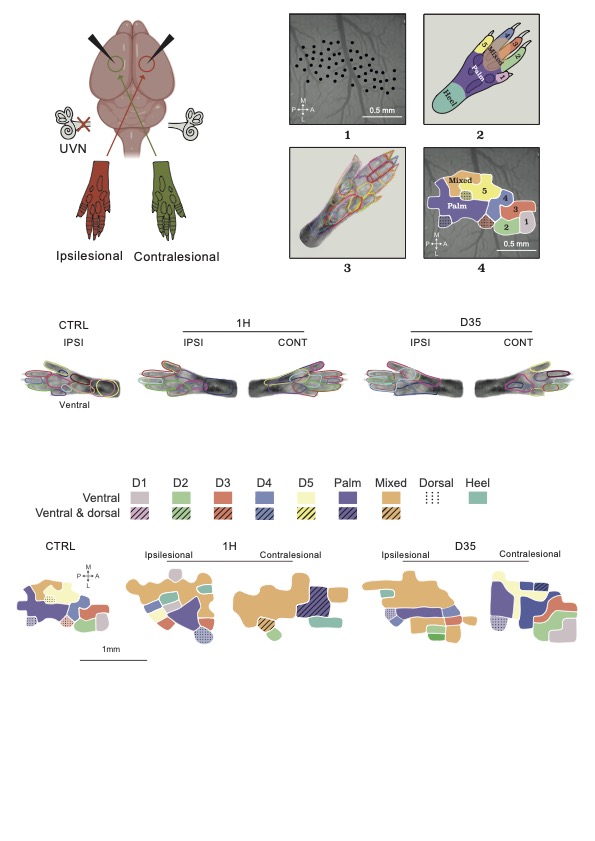
Unilateral vestibular neurectomy induces a remodeling of somatosensory cortical maps
Justine Facchini, Guillaume Rastoldo, Christian Xerri, David Péricat, Abdessadek El Ahmadi, Brahim Tighilet*, Yoh’i Zennou-Azogui*
Abstract :
"Unilateral Vestibular Neurectomy (UVN) induces a postural syndrome whose compensation over time is underpinned by multimodal sensory substitution processes. However, at a chronic stage of compensation, UVN rats exhibit an enduring postural asymmetry expressed by an increase in the body weight on the ipsilesional paws. Given the anatomo-functional links between the vestibular nuclei and the primary somatosensory cortex (S1), we explored the interplay of vestibular and somatosensory cortical inputs following acute and chronic UVN. We determined whether the enduring imbalance in tactilo-plantar inputs impacts response properties of S1 cortical neurons and organizational features of somatotopic maps. We performed electrophysiological mapping of the hindpaw cutaneous representations in S1, immediately and one month after UVN. In parallel, we assessed the posturo-locomotor imbalance during the compensation process. UVN immediately induces an expansion of the cortical neuron cutaneous receptive fields (RFs) leading to a partial dedifferentiation of somatotopic maps. This effect was demonstrated for the ventral skin surface representations and was greater on the contralesional hindpaw for which the neuronal threshold to skin pressure strongly decreased. The RF enlargement was amplified for the representation of the ipsilesional hindpaw in relation to persistent postural asymmetries, but was transitory for the contralesional one. Our study shows, for the first time, that vestibular inputs exert a modulatory influence on S1 neuron’s cutaneous responses. The lesion-induced cortical malleability highlights the influence of vestibular inputs on tactile processing related to postural control."








